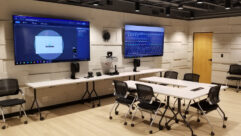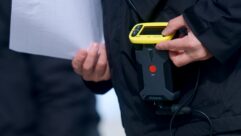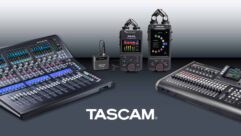

The second upgrade of the projection systems for two ship’s bridge training simulators at the US Naval Academy (USNA) in Annapolis, Maryland was recently commissioned to assist underclassmen to learn ship’s navigation and safety on the high seas and in scores of harbors around the world. These USNA bridge simulators are built by Kongsberg Maritime Simulation Inc., which in turn relied on design and service support from Electric Picture Display Systems, Inc. of Melbourne, Florida and state-of-the-art simulation projectors from Christie Digital Systems USA, of Cypress, California.
The USS Storm’s projector was installed in late November 2010 and the simulator was used by more than 180 underclassmen per day in December 2010 alone. Up to 4,000 students are expected to use the simulators for training this year. Reaction has been highly favorable, as the varied scenarios and vivid, real-world detail provided by the simulations and their projectors are the next best thing to being there. The USS Doyle bridge upgrade was completed in December 2009.
“The US Naval Academy needed a high-end and durable, low-maintenance solution that provides its students with realistic training scenarios all day, every day. Our solutions, anchored on Christie’s projectors, are helping them do just that,”? says David Meers, account executive for Kongsberg. “We provide our customers with reliable, ready-to-use ‘workhorse’ simulators, with configurable features, providing scalable solutions based on the requirements the marketplace,”? he added.
Each simulation room includes seven projectors arranged in a 1 x 7 array, to provide a field of view of about 210 degrees in one room and 205 degrees in the other. The simulator for the USS Storm projects images 12 feet high, while the USS Doyle features images of nine feet in height.
“By using 3-chip DLPA® technology we ensured the visual punch needed by supplying the entire color spectrum. This is especially vital with the application for the USS Storm, which is projecting detailed images to 12 feet high and 16 feet wide for each channel,”? said RP Higgins, president, Electric Picture. “What makes Christie 3-chip DLPA® technology so important in the maritime-simulation community is its ability to discern green, yellow and red buoys from distances of two miles or more. Projectors with color wheels can struggle with this. Christie’s service and support is among the industry’s best and they respond quickly and professionally. As well, this is important for all customers, who typically plan on working their simulators for a minimum of five years, and therefore need to know that their projectors are up to the task,”? added Mr. Higgins.
The database feeding the USNA system incorporates images from all types of ships, including giant aircraft carriers, destroyers and submarines. The simulators help the academy provide the most effective training available, preparing its graduates for leadership roles throughout the US Navy.
Christie Package is Feature/Function Rich
The bridge simulators use Christie DS+6K-M, 3-chip DLPA® systems with dual lamps. Both simulators incorporate Christie Twistâ„¢ and Christie AutoCalâ„¢. The lamps in the projectors use Christie’s LiteLOCâ„¢, a light output control technology that, with Christie Twist, provide optimum optics while ensuring that the projector stays within registration convergence with AutoCal.
“The second bridge was a greater technical challenge, since it involved a larger display area with increased height, shorter throw lenses and required a large overlap of each projector’s throw, but Christie has a number of features to meet the challenge,”? added Meers.
For example, Christie Twist has an easy-to-use GUI that runs on an external PC and enables users to configure many of the features of the hardware board. And Christie AutoCal provides automatic display system calibration, giving the end-user expert image display adjustment via a simple checkbox interface. This feature allows the user to re-calibrate both geometry and blending with superior accuracy, efficiency and ease.










